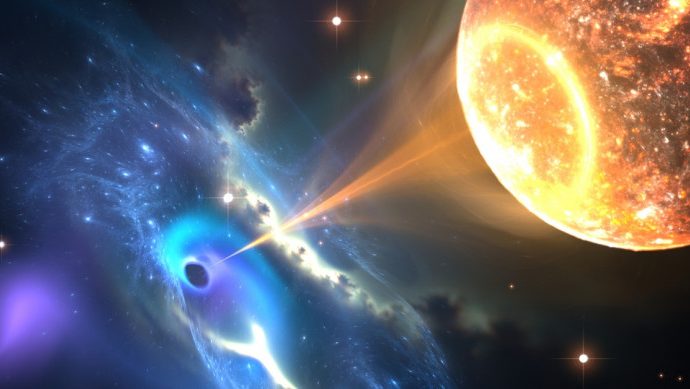The incredible space event happened about 900 million years ago.
Source: Interesting Engineering
A group of scientist claim to have carried out the first observation ever of a black hole swallowing a neutron star.
One of the lead researchers, Professor Susan Scott from the Australian National University (ANU), likened the fascinating space collision to Pac-Man swallowing a star whole.
A rock and a hard place
Neutron stars and black holes are both incredibly dense remains of dead stars. The difference is that the gravitational pull of a black hole is thousands of times greater than that of a neutron star – meaning a black hole would come out as the winner in any space collision between the two.
On Wednesday 14 August 2019, it turns out that gravitational-wave discovery machines in the United States and Italy detected – for the first time ever – ripples in space and time from the ferocious encounter between a neutron star and a black hole.
Incredibly, this cataclysmic event was detected to have happened about 8,550 million trillion kilometers away from Earth.
In an Australian National University statement, Professor Susan Scott, from the ANU Research School of Physics, said that this was part of a project that has also seen the observation of a merger of two black holes and the collision of two neutron stars.
“About 900 million years ago, this black hole ate a very dense star, known as a neutron star, like Pac-man – possibly snuffing out the star instantly,” said Professor Scott, Leader of the General Relativity Theory and Data Analysis Group at ANU and a Chief Investigator with the ARC Centre of Excellence for Gravitational Wave Discovery (OzGrav).
More analysis underway
Scott said that the Australia National University SkyMapper Telescope had scanned the entire region of space where the event likely occurred, but no visual confirmation has yet been found.
The original finding was made by detecting gravitational waves via the European Gravitational Observatory in Italy.
Researchers are still analyzing the data in order to confirm the size of the two objects. Initial findings strongly indicate the detected event was indeed a black hole swallowing a neutron star.
“However, there is the slight but intriguing possibility that the swallowed object was a very light black hole – much lighter than any other black hole we know about in the Universe,” Professor Scott said. “That would be a truly awesome consolation prize.”
The final results are expected to be published in a scientific journal.

































Leave a Comment
You must be logged in to post a comment.